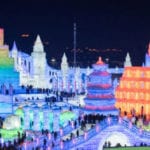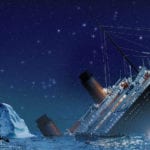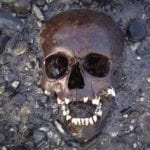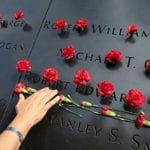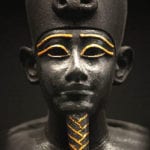 Mysteries
Mysteries  Mysteries
Mysteries  History
History 10 Surprising Stories About the Texas Rangers
 Humans
Humans 10 Philosophers Who Were Driven Mad by Their Own Theories
 Miscellaneous
Miscellaneous 10 Video-Game-Worthy Weapons and Armors from History
 Weird Stuff
Weird Stuff 10 Psychics Who Accurately Predicted Wartime Events
 The Arts
The Arts 10 Pieces of Art Inspired by a Broken Heart
 Health
Health 10 Science Fiction-Sounding New Medical Treatments
 History
History 10 Surprising Facts About the Father of Submarine Warfare
 Space
Space Ten Astonishing New Insights into Alien Worlds
 Weird Stuff
Weird Stuff 10 Bizarre Summer Solstice Rituals Still Practiced Today
 Mysteries
Mysteries Top 10 Haunting Facts About the Ghost Ship MV Alta
 History
History 10 Surprising Stories About the Texas Rangers
 Humans
Humans 10 Philosophers Who Were Driven Mad by Their Own Theories
Who's Behind Listverse?

Jamie Frater
Head Editor
Jamie founded Listverse due to an insatiable desire to share fascinating, obscure, and bizarre facts. He has been a guest speaker on numerous national radio and television stations and is a five time published author.
More About Us Miscellaneous
Miscellaneous 10 Video-Game-Worthy Weapons and Armors from History
 Weird Stuff
Weird Stuff 10 Psychics Who Accurately Predicted Wartime Events
 The Arts
The Arts 10 Pieces of Art Inspired by a Broken Heart
 Health
Health 10 Science Fiction-Sounding New Medical Treatments
 History
History 10 Surprising Facts About the Father of Submarine Warfare
 Space
Space Ten Astonishing New Insights into Alien Worlds
 Weird Stuff
Weird Stuff 10 Bizarre Summer Solstice Rituals Still Practiced Today
Top 10 Incredible Doomsday Vaults
Global or nuclear war. A stray meteor on a collision course with Earth. Famine. Pestilence. A shift of the Earth on its axis. A long-term global power outage. Extreme weather. Massive floods. Human error. Any number of catastrophic events could bring Doomsday upon us. We’re ready, though, or as ready as we can be, at least where food supplies are concerned. Culture, beneficial bacteria, and cookies should survive, too.
We have built vast storage vaults in the arctic and elsewhere, and scientists hope to build yet another one, underground, on the moon. Whatever befalls us on Doomsday, survivors will have food to eat, cultural artifacts to treasure, sweet treats to enjoy, and maybe even pets to pamper.
10 Svalbard Global Seed Vault
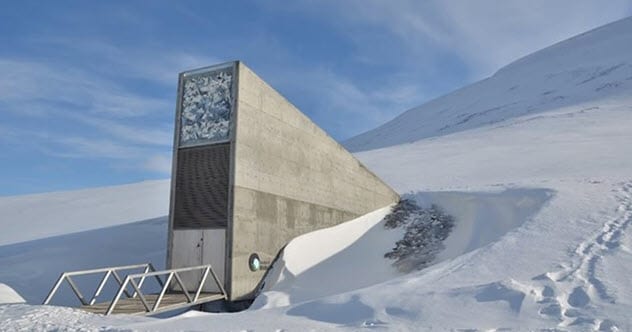
The Svalbard Global Seed Vault (SGSV), administered by Norway, is located on icy islands, known as Svalbard, or the “cold coast.” As might be expected, this region of the world is sparsely populated. Polar bears outnumber people. The residents of Longyearbyen, the closest settlement, number just over two thousand. In this “twilight zone . . . the sun never rises, and the moon never sets.”
A huge, wedge-shaped entrance leads into the side of a mountain and into the Doomsday vault, which is built to last 10,000 years. The vault is so cold that it will remain frozen for a quarter of a century, even if power to the refrigeration that maintains temperatures below those of the permafrost that covers the vault should fail. The treasure the vault holds is too precious to risk: seeds, collected from all over the world, over a period of seventy years—1.5 billion of them, enough to reseed agriculture, should a Doomsday event occur.
The SGSV is also a hedge against extinction, which isn’t something that may happen in the future, but is happening now. Scientist Cary Fowler offers an example: of the 7,100 varieties of apples that existed in the 19th century, only 300 remain; “the extinction rate for apple varieties in the United States is about 86 percent.” There’s a reason that “extinction exists in all crops. . . . Seeds used to be passed down through families. But today, farmers are planting mass-produced industrial seeds. The upside is more food. The downside is the family variety goes extinct.”
Any number of catastrophes, natural, technological, or otherwise, including “equipment failure or mismanagement,” can destroy a crop, Fowler says, and “once that crop is lost,” it is gone forever, and, with it, its resistance to disease or pests would disappear forever as well. That’s why the SGSV is needed and why Norway paid the $9 million in construction costs, Bill Gates paid the costs of shipping the 1.5 billion seeds, and almost every nation has contributed seeds. “These resources stand between us and catastrophic starvation on a scale we cannot imagine,” Fowler declares.
9 Chang La Vault
Chang La is remote. Three hours from the nearest town, Leh, Chang La is difficult to reach. It is situated atop a frozen mountain in the Himalayas, on a treacherous road that traverses elevations as high as 5,360 meters (17,688 feet). Temperatures are below zero, and humidity is almost non-existent. Neither earthquakes nor floods are threats. Despite its distant and inhospitable location, the high desert site is perfect for its mission, the storage of 10,000 seeds and 200 plant species, “preserved in permafrost at -18 degrees Centigrade,” which, in the event of a Doomsday catastrophe, would be used to replenish crops.
The seeds stored in the Chang La Vault (CLV) are genetically modified to ensure “that grains and vegetables can reproduce at high altitudes, in salty water, less water, and high temperatures.” The vault’s seeds are resistant “to temperature, pests, and humidity” and will allow generations to come to enjoy a variety of produce, including “apricots, cabbage, carrots, potatoes, radishes, tomatoes, barley, rice and wheat,” since such seeds have extremely long lifetimes—413 years for onion seeds, 1,100 years for rice seeds, 1,600 years for wheat seeds, 2,000 years for barley seeds, and an astonishing 9,000 years for pea seeds.
India has great plans for the future of the CLV, which is intended “to rival [the] Svalbard Seed Vault in Norway, as well as Fort Collins, Colorado’s National Center for Genetic Resources,” the latter of which holds “600,000 seed packets.” However, India must first equip the vault with a cooling system for use during the weeks that temperatures warm to -4 degrees. The CLV is intended as a “backup” for Norway’s SGSV, which flooded after uncharacteristically high temperatures melted the island’s ice. Climate change, it is feared, could result in additional, similar problems for the Norwegian seed repository.
8 Underground Lunar Vault
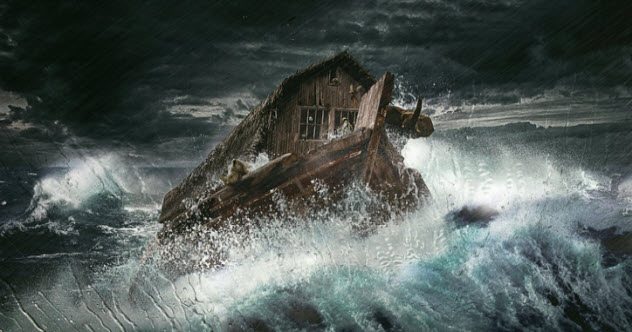
The CLV might not be the only backup plan needed to ensure the survival of agriculture in the event of a Doomsday situation, and scientists have come up with an out-of-this-world idea for an additional backup facility, a plan C, as it were. They propose to build an underground vault on the moon as a sort of “global insurance policy.”
Before such an “ark” could be constructed, though, there has to be progress in cryo-robotics technology. To be preserved, the lunar vault’s seeds would have to be frozen at a temperature of -292 degrees Fahrenheit, and the stem cells would have to be kept at -320 degrees Fahrenheit, temperatures which could adversely affect the underground facility’s metal parts. There are other potential problems, too, that might have to be overcome regarding the effect of gravity on the seeds’ preservation and communication between the Earth and the underground lunar vault.
Scientists have a location for the solar-powered site in mind: a “network” of 200 subterranean lava tubes that would protect the frozen seeds from “solar radiation, surface temperature changes and micrometeorites.” Elevator shafts would connect the surface of the moon, equipped with a photovoltaic system, a Ka-Band antenna for communications, and an air-locked entrance, with the underground lava tubes, inside which preservation modules and a preservation analysis laboratory would operate. All scientists need to make their dream come true, besides technological advancements in cryo-robotics technology, are “250 rocket launches . . . to transport about 50 [seed] samples from each of the 6.7 million species to the moon.”
7 U. S. National Center for Genetic Resources Preservation
At Colorado State University, the United States National Center for Genetic Resources Preservation (NCGRP) preserves 600,000 “seed packets.” The seeds are kept at a temperature approximating that of “a home freezer,” to prevent them from degrading so they remain “viable longer.” The Center’s research leader, Dave Dierig, explains, “They’re all bar-coded,” and, to identify what kind of seeds any of the packets contains, a “secure database” must be accessed. Closed-circuit television cameras record every move everyone in the facility makes. Both other seed vaults and private companies, such as Dupont and Monsanto, store their seeds among those of the NCGRP.
Lisa Hill, who works in the Center’s Biophysics Lab, provides insight into some of the daily activities in which the facility’s scientists are involved. One moment, she may be “peering into a compound microscope. As she focuses on the delicate task of extracting an acorn’s embryo,” she continues to investigate “the secrets of how [plant groups] survive in storage and how” they can be revived and grown after they are removed from storage. Her work also involves her in research concerning species “longevity, best storage practices, and . . . seed development.” If Doomsday happens, the Center wants to be ready.
6 Millennium Seed Bank Partnership
The Millennium Seed Bank Partnership (MSBP) seeks to preserve the seeds of plants threatened with extinction and of plants most likely to be used in the future. Forty percent of the world’s plants currently face extinction. The MSPB, in cooperation with 100 countries and overseas territories “has . . . banked approximately 15.6% of the planet’s wild plant species.” These plants are endangered by “land use and climate change.” Some of the MSBP’s projects include conserving trees and wild plants and cultivating crops that can better withstand the effects of climate change. These projects are active globally as well as in Africa, North America, South America, Asia, Australia, the Caucasus, Europe, and the British Virgin Islands.
Thanks to global, regional, and local support, the MSBP, which started in 2000, now safeguards 2.4 billion seeds gathered from around the world. Many of the seeds grow only in small areas and are endangered: “Yadkin River goldenrod (Solidago plumosa) grows only along a 2.5-mile stretch of the Yadkin River in North Carolina. Peters Mountain mallow (Iliamna corei) grows only on a single mountain on the VA-WV border. Venus flytrap (Dionaea muscipula) is . . . endemic to the Carolinas (99% occurring in North Carolina).”
5 SVF Foundation
Not only plants, but animals, too, are being preserved through the freezing of their “seed,” or sperm, and their embryos. The SVF Foundation’s cryopreservation program contains “45,000 semen and embryo samples from 20 breeds of rare cattle, sheep and goats.” The samples are stored at -312 degrees in liquid nitrogen. The non-profit Foundation was founded by the late Dorrance (“Dodo”) Hill Hamilton, who was a major shareholder in the Campbell Soup Company.
The organization’s mascot, Chip, a Tennessee fainting goat, is himself a specimen of the animals that have been bred from the frozen samples. The New York Times describes the process that produced Chip: “In early 2004, as a six-day-old embryo, he was flushed from his mother’s womb and spent the next several months frozen. Thawed and transplanted into a surrogate Nubian doe, a common breed, he was born on May 7, 2004, a perfectly normal fainting goat.” The same process is used to preserve new specimens: “Each time the foundation freezes a batch of embryos from a new breed, it thaws a few and transplants them into surrogate animals, repeating the test that Chip once passed.”
Although Chip will live out his life at the Foundation’s Newport, Rhode Island, facility, not all of the animals that could be born of the transplantation process might be as fortunate. The frozen semen and embryos are kept on hand in case of a catastrophe. Should a disaster occur, the Foundation’s chief scientific advisor, Dr. George Saperstein, says, “these frozen embryos would be made available, and in one generation we would be back in business.”
4 Frozen Zoo
The San Diego Zoo is also doing its part to preserve animals. In 1972, it began its collection of rare animal hides. Now, advances in stem cell technology may allow the zoo to fulfil its mission to save animals facing extinction. According to its label, a test tube removed from a container inside liquid nitrogen that is -173 degrees Centigrade (-280 degrees Fahrenheit) contains a northern white rhino.
Actually, it contains a sample of the rhinoceros’s skin, which, with current technology, can be transformed into induced pluripotent stem (IPS) cells, stem cells generated directly from a somatic cell (in this case, the rhino’s skin cells). In turn, the stem cells can produce sperm and egg cells, which, combined through in vitro fertilization, form an embryo. The production of an embryo allows scientists to recover “long-dead animals whose species are almost extinct.” Endangered species need not be endangered anymore. In fact, the technology, some believe, may even make Jurassic Park part fact, part fiction as scientists “reverse extinction.”
Researchers may not bring back dinosaurs, but the Zoo’s collection of epidermal cells contains frozen samples of 8,400 species, including “Gobi bears, endangered cattle breeds, . . mountain gorillas, pandas, a California grey whale and condors.”
3 Arctic World Archive
Neither the preservation of plants nor of animals is the concern of the Arctic World Archive (AWA), which seeks, instead, to preserve humanity’s cultural legacy in the event of a global catastrophe. Presently the AWA contains 21 terabytes of open source code representing the world’s most cherished works of art, literature, and religion. The AWA occupies a 300-meter-deep “decommissioned coal mine in the northernmost settlement of the world” and works with its partner, GitHub, a code-hosting platform and the biggest software repository on the planet.
The AWA was founded in 2017 by a Norwegian data-storage company, Piql, on the island of Spitsbergen. The organization’s neighbor is the Svalbard Global Seed Vault, which is “just down the road.” The national archives of Mexico and Brazil were the first to provide deposits, but the AWA now preserves cultural contributions from seventeen nations. Included among its treasures are Vatican Library manuscripts, paintings by Rembrandt and Munch, music collections, “scientific breakthroughs, political histories,” and sports memorabilia.
The source code is preserved on 186 “high-resolution photosensitive” reels of Piql film that is “specially designed for longevity and high density digital writing,” a process that requires that the files be converted “into QR codes [prior to] writing them onto individual frames in a reel of film” and processing the frames “in a developer cartridge, before going through an intensive quality assurance check.” At the beginning of each reel of film, “instructions in five different languages [explain] how to convert the QR codes into usable files [using only] a computer, a camera, and a light source.” The film lasts 500 years, long enough, hopefully, for survivors to weather a Doomsday event and enjoy culture without starting over from scratch.
2 Global Microbiota Vault
Not all germs are bad, and we rely on good microbes to help us maintain our health, both as individuals and as a species: “Human microbiota, a community of trillions of microorganisms that include bacteria, fungi and viruses, perform critical health functions in the human body, from facilitating digestion to bolstering the immune system.” That’s why Rutgers University researchers recommend the construction of a “last-resort vault” to store and preserve beneficial microbes. Indeed, during the past five to seven decades, a significant decline in human microbiota has already occurred, and this decline represents “a threat to us right now,” Maria Gloria Dominguez-Bello, a professor in Rutgers’s Department of Biochemistry and Microbiology, warns. “Asthma, celiac disease, allergies, Type 1 diabetes and autism are skyrocketing. And the loss of microbial diversity is likely an underlying factor,” she says, which prompts the question of whether microbes can be restored.
The Svalbard Global Seed Vault and similar “bio-banks” suggested the Global Microbiota Vault (GMV). The GMV would be “located in a politically neutral country” to encourage “all countries . . . to contribute to the collection . . . to make it as diverse, and thus as comprehensive, as possible.” The GMV would cost millions of dollars to build, staff, and maintain, but the health of humanity, following a Doomsday scenario, would be well worth it, Rutgers University scientists believe.
1 Global Oreo Vault
Food, art, literature, religious teachings, and even beneficial microbes are all well and good, in their own ways, but what about dessert? Even after—especially after—a world-shaking cataclysm, people are going to want sweet treats to eat.
No need to worry: just in case an asteroid collides with the Earth, Oreo has our sugar rushes covered. The Global Oreo Vault’s entrance is designed to resemble that of the wedge-shaped access to the permafrost-covered Svalbard Global Seed Vault. To protect the packaged cookies even further, they are “wrapped in mylar [sic], which can withstand temperatures from -80 degrees to 300 degrees Fahrenheit and is impervious to chemical reactions, moisture and air,” an Oreo spokesperson assured the public.
The cookie company hired architect Markus Johansdotter to manage the project, instructing him that the cookie vault had to be built within 30 days and had to operate the same way the SGSV works. Johansdotter described his work as “important,” but implied that it was also a bit intimidating. Protecting and preserving Oreos, he explained, was “a big responsibility.”
On October 2020, Johansdotter received a telephone call announcing that the vault’s construction was complete; the project was a success. He celebrated with other team members, as they huddled together in front of the Oreo Vault, shivering inside thick coats and wearing hats or hoods, while holding a package of Oreos. They were all smiles, knowing that, because of their diligent, hard work, the cookies’ recipe and a stockpile of Oreos would be on hand after any apocalypse that might occur.
Although NASA had not considered the asteroid’s passage near the earth to be a threat, Oreo was taking no chances. The company is prepared, now, if, in the future, an even bigger asteroid—or some other disaster—takes place, knowing the cookie is tucked away safely at the hard-to-reach coordinates 78° 08’ 58.1” N, 16° 01’ 59.7” E.
Top 10 Conspiracy Theories About Disasters
About The Author: An English instructor at the University of Nevada Las Vegas, Gary L. Pullman lives south of Area 51, which, according to his family and friends, explains “a lot.” His four-book series, An Adventure of the Old West, is available on Amazon.
